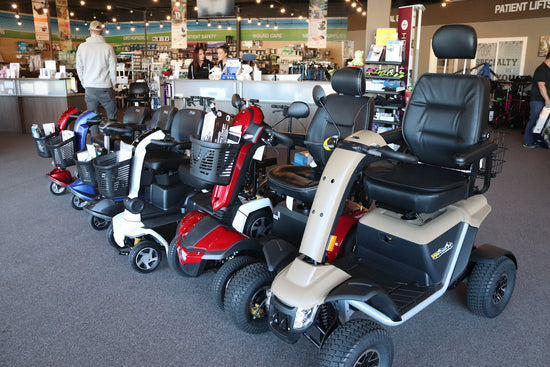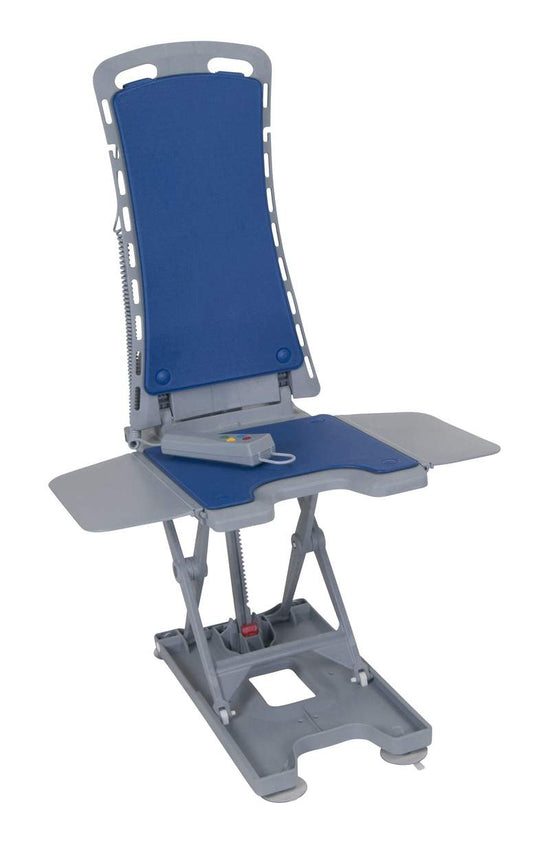Wheelchairs have been an essential mobility device for people with disabilities for many decades. Over time, wheelchairs have evolved from simple manually operated models to sophisticated, motorized ones.
However, finding the right wheelchair can be a daunting task, especially for those who are new to the world of assistive technology. Whether you're buying a wheelchair for yourself or a loved one, it's essential to understand the different types of wheelchairs available and the factors to consider when choosing one.
In this blog post, we will explore the various types of wheelchairs available, from power models to pediatric wheelchairs, to help you make an informed decision that best suits your mobility needs.
Different types of wheelchairs
Standard Wheelchairs
Standard wheelchairs are the most common type of mobility device available, and they come in various styles, materials, and sizes to meet the individual needs of users. These wheelchairs are generally constructed from durable materials such as steel or aluminum, making them stable and sturdy.
They typically come with features like footrests, armrests, and adjustable seat heights. Standard wheelchairs are known for their reliability and endurance, with a higher weight capacity than transport wheelchairs. However, they do not offer the same degree of customization or portability that other wheelchairs may offer. They may also be heavier and bulkier, making them more cumbersome to transport.



Lightweight Wheelchairs
Lightweight wheelchairs are designed to be easily maneuverable and transportable, making them ideal for individuals who are regularly on the go. These chairs are constructed with lightweight materials such as aluminum, titanium, or carbon fiber, which makes them much easier to lift and transport.
One of the primary benefits of lightweight wheelchairs is their portability, which allows for convenient travel, both indoors and outdoors. They are also highly customizable and can be adjusted to fit a wide variety of personal preferences and needs. However, lightweight wheelchairs often have a lower weight capacity than heavier models, which may not be suitable for some individuals. They may also have a shorter lifespan due to their lighter construction materials.



Ultra Lightweight Wheelchairs
Ultra lightweight wheelchairs are a step up from regular lightweight wheelchairs, as they are designed to be even more maneuverable and portable. These chairs are constructed with lightweight materials such as aluminum alloys and carbon fiber composites and weigh only around 15 to 20 pounds, making them incredibly easy to lift and transport.
The primary benefits of ultra-lightweight wheelchairs are their high degree of customization, adjustability, and portability. They offer increased mobility and flexibility for users who need to travel frequently and require a wheelchair that is easy to transport. However, they have a lower weight capacity and durability than heavier models, which may not be suitable for all users.



Heavy Duty Wheelchairs
Heavy-duty wheelchairs are specifically designed for individuals with larger body builds or higher weight capacity needs. These chairs are built with a sturdy frame and often have reinforced components to provide increased durability and stability.
One of the primary benefits of heavy-duty wheelchairs is their ability to accommodate individuals who require a weight capacity greater than the average wheelchair can handle. They also offer increased comfort and support due to their larger seating and backrest dimensions. However, heavy-duty wheelchairs are often heavier and bulkier, making them more challenging to transport. Additionally, they can be more expensive than standard wheelchairs, making affordability an issue for some individuals.



Reclining Wheelchairs
Reclining wheelchairs are mobility devices that can be adjusted to allow the user to recline back for added comfort and support. These chairs typically have a backrest that can be adjusted to various angles, allowing users to find the most comfortable position for their needs. One of the primary benefits of reclining wheelchairs is increased comfort and pressure relief, which can help prevent pressure sores.
They also offer users the option to rest or nap while remaining in their chairs. However, reclining wheelchairs can be heavier and bulkier than traditional wheelchairs, making them harder to transport. Additionally, they may be more expensive than standard wheelchairs.



Transport Wheelchairs
Transport wheelchairs are lightweight mobility devices designed primarily for transport use, making them ideal for individuals with mobility issues who require frequent transportation. They are designed to be lightweight, compact, and portable, making them easy to transport and store in smaller vehicles. One of the primary benefits of transporting wheelchairs is their convenience.
They can be disassembled or folded up and placed in a car trunk or backseat. They are also more affordable than other types of wheelchairs. However, transport wheelchairs typically have smaller wheels, making them less suitable for outdoor use or rough terrain. They also have limited adjustability options as compared to other types of wheelchairs.



Power Wheelchairs
Power wheelchairs are motorized mobility devices designed for those who have difficulty propelling a manual wheelchair. They are controlled by a battery-powered motor and are suitable for individuals with limited upper body strength, severe fatigue, or those who require high independence.
They offer a variety of options, such as recline, tilt, and footrests, enabling individuals to adjust to their unique needs for maximum comfort and safety. The primary benefits of power wheelchairs include convenience and the ability to navigate different environments with ease. However, they may have limitations in some environments and are typically heavier and more expensive than manual chairs. Overall, power wheelchairs offer greater independence, freedom, and comfort for those requiring assistance with mobility.



Factors to Consider When Choosing a Wheelchair: Comfort, Mobility, and Safety
Choosing the right wheelchair requires considering comfort, mobility, and safety. The wheelchair should be comfortable to avoid pressure points, and features such as adjustable armrests and headrests can help.
Mobility features such as wheel size and drive controls, as well as safety features such as the size and brakes of the wheelchair, must be considered. Power wheelchairs offer great mobility and independence, while manual wheelchairs promote exercise and energy conservation. It is vital to know one's individual needs and preferences to select the right wheelchair.
Maintenance and Upkeep of Wheelchairs: Do's and Don'ts
Maintaining and caring for a wheelchair is crucial to extend its lifespan, increasing its efficiency, and preventing unnecessary wear and tear. Here are the top dos and don'ts of wheelchair maintenance and upkeep:
Do's:
- Keep the wheelchair clean by wiping down the frame and seats regularly.
- Check the tires or casters for wear and tear and replace them when necessary.
- Keep the battery charged on power wheelchairs to ensure maximum usage time.
- Lubricate the moving parts regularly to reduce friction and maintain optimal performance.
- Check the brakes and tighten any loose screws or bolts.
Don'ts:
- Don't leave the wheelchair out in the rain, as this can damage the frame and the battery of power chairs.
- Don't use harsh chemicals or abrasive cleaners on the wheelchair, as this can cause damage to the finish and structure.
- Don't overload the wheelchair beyond its weight capacity.
- Don't attempt to fix or adjust the wheelchair without proper training or guidance.
- Don't neglect regular maintenance and servicing, even if the wheelchair is in good condition, as it can prevent potential problems in the future.




